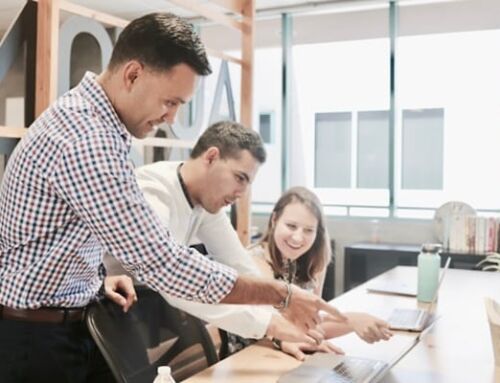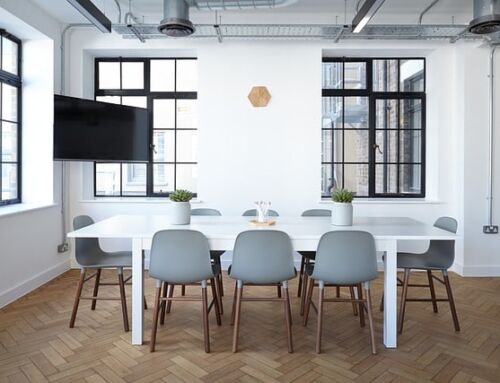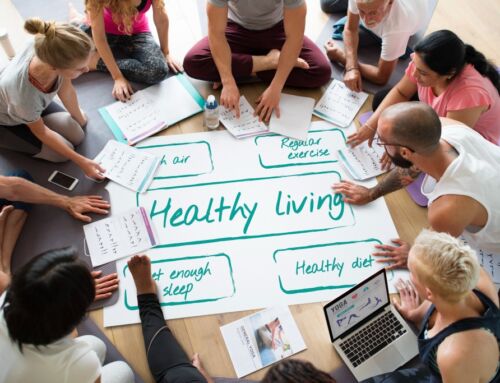The office doesn’t feel the way it used to. But maybe that’s a good thing.
These days, people arrive with different expectations. They aren’t just looking for a desk or a decent cup of coffee. They’re looking for a reason to be there. The idea that work is a place has faded. Now, it’s more of a network. Something that happens across spaces, screens, and time zones.
But when someone chooses to come in, when they walk through the door, that choice should feel easy, intentional, and safe. Creating that experience isn’t just IT’s job anymore. It’s HR’s too.
Image by Antoni Shkraba Studio on Pexels
Trust Begins at the Door
More and more, the physical workplace has become a mirror of company values. People notice if their needs were considered before they arrived. They feel it in the flow of the space, in the absence of friction. A forgotten access badge, a locked door, a confused receptionist, for example. Those little moments land harder than we think. They create doubt. They raise questions: Am I welcome? Was this made for me?
It turns out, trust doesn’t begin with a team-building exercise. It starts at the door.
When an employee walks into the building and everything just works — their phone grants access, their locker opens, their meeting room starts warming up — that’s not magic. That’s intention. It’s a kind of invisible hospitality that HR plays a critical role in designing.
Meeting the Needs of a Hybrid Workforce
In hybrid workplaces especially, this matters. People aren’t coming in out of obligation anymore. They’re coming in for connection, collaboration, maybe even a little inspiration. And they’re bringing with them a heightened sensitivity to how space feels. Safe or uncertain. Inclusive or rigid. Flexible or stuck in the past.
To meet that need, HR teams are rethinking how people interact with physical environments. They’re asking new questions. How do we design for people who come in twice a week? How do we make sure a first-day employee feels confident navigating the building? How do we support different teams with different schedules, without creating chaos?
The Role of Modern Access Control Systems
This is where infrastructure and culture meet. It’s also where systems like a modern access control system quietly reshape the employee experience. Not by tracking people or adding layers of approval, but by removing unnecessary effort. By anticipating needs. By making movement through the workplace intuitive.
These systems, when thoughtfully implemented, support HR in a way that few tools can. They can sync with employee directories and calendars. They can assign access rights dynamically, based on role or schedule. Most importantly, they can help HR balance flexibility with security. That’s a delicate act in today’s compliance-heavy, privacy-conscious landscape.
But perhaps most importantly, they signal care.
Signaling Care Through Seamless Experiences
Employees don’t want to feel like data points. They want to feel known. When an organization takes steps to make arrival seamless, to reduce waiting, guessing, swiping, and scanning, that sends a message. We see you. We trust you. We thought about this.
Of course, that trust needs to go both ways. Some people hear “security system” and think “surveillance.” That’s a reasonable concern, and HR should address it openly. When employees understand why systems exist, and when they’re shown how those systems protect rather than monitor, fear gives way to confidence.
In practice, these tools can also help with things that matter deeply to HR. They can ensure that sensitive areas are only accessible to those who need them, reducing risk without resorting to over-policing. They can provide data that informs office design, like how many people tend to come in on Wednesdays.
And all of this happens, ideally, in the background.
The Future of Work: Kindness and Intentionality
When systems are designed with empathy, when technology supports human rhythms instead of interrupting them, the workplace becomes something better than functional. It becomes kind.
HR is uniquely positioned to lead that shift. To build bridges between people and place. To partner with security, IT, and facilities in shaping not just how people work, but how they feel when they do it. The tools matter, yes. But the intent behind them matters more.
A Smooth Arrival Builds Lasting Trust
If someone arrives at the office and everything feels smooth, from entry to exit, they may not thank the access system, or even notice it. But they’ll feel the result. They’ll get to work faster. They’ll move through the day with more ease. And they’ll leave with a subtle but powerful sense that they were taken care of.
That’s what builds trust. Not a mission statement, but an experience that says: You belong here. You’re safe here. We thought of you.
And that begins, quite literally, the moment the door opens.







Leave A Comment